
Molasses Rust Removal
StevieB - 9/1/13 at 09:05 PM
I've read and seen a few bits on the net about removing rust from old parts by leaving them submersed in a molasses mix for a few days.
I've seen the articles on electrolysis but have always shy'd away from it because of the various health warnings on the by product nasties
that are possible.
I've also tried using malt vinegar before to good effect, although the smell that comes out of a selaed box with 5 litres of malt vinegar with
old car parts after a few days is, well, pungent beyond what words can describe. It did a very good job though after 5 days left to soak.
So, I figured I'd give the molasses a go as an experiment on a bracket that was used on my Triumph Tiger to attach the pannier latches to the
rear footpegs. Because of it's location, this piece of metal has been subjected to 30,000 miles of road salt and pelted with grit etc. some of
the original powder coat is just about in place but most has long since succumbed to the orange peril.
The plan is to suspend the part in the molasses mix for a period of 5 days, which would just about represent putting a part in to soak on a Sunday
night and then come back to it the following weekend ready for clean up and paint. It's only a small part and ordinarily it could be sorted very
quickly with a wire brush. But the main point of this is to see if it works before I go to the bother of making a much bigger tank and dropping in
some larger parts that will save me a whole load of time with the wire brush if it works effectively enough.
I mixed the molasses (in this case a bit of Lyle's Black Treacle, which is the same stuff) at a ratio of 1:10 with water - I used hot water to
help the dilution along.
I then suspended the part in the mix and will take a photo every day to show progress. I won't be doing anything other than giving the part a
quick rinse and wipe at each stage until the 5 days is up.
So, this is the part before it went in. I scraped as much of the loose powder coat off as I could to expose the rusty metal beforehand. As you can
see, it's pretty well oxidised:
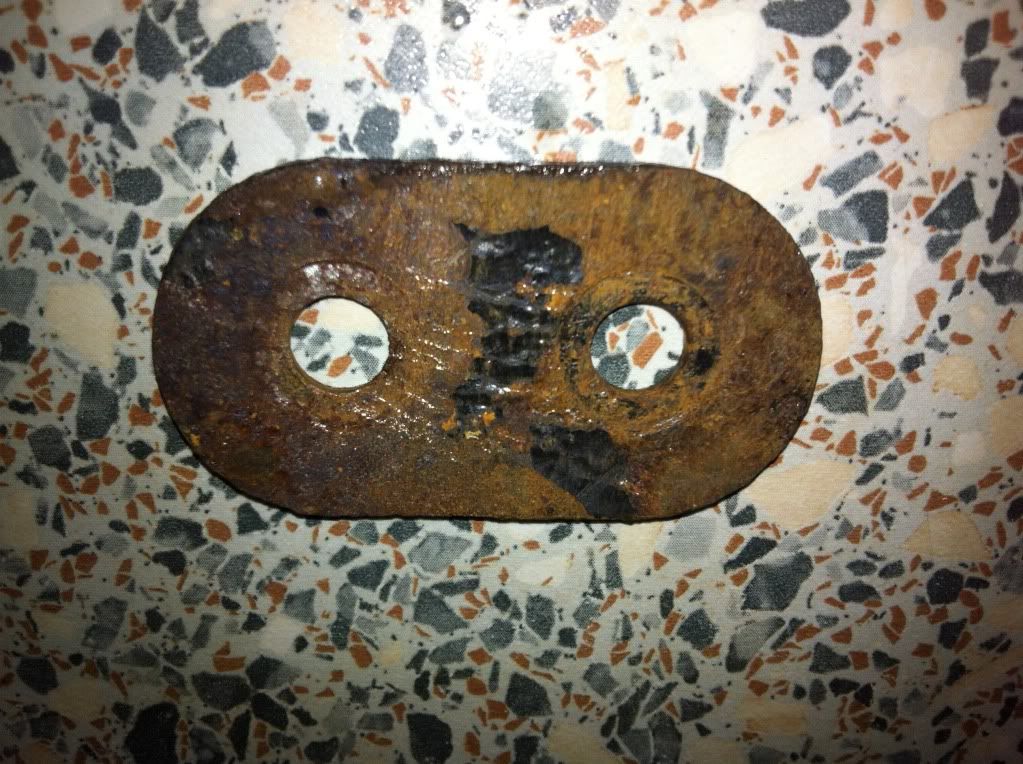
Day 2 (Tuesday) - not much change but a little bit of clean metal starting to show through:
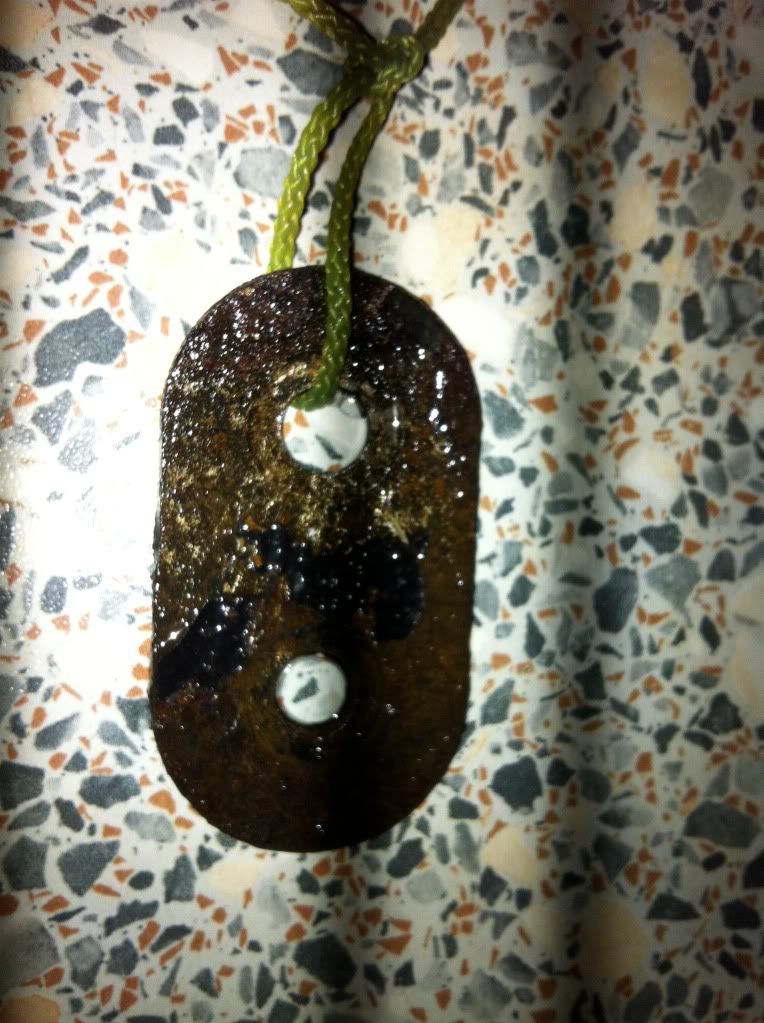
Days 3 (Wednesday) - a good bit more progress, starting to look like it might actually work:
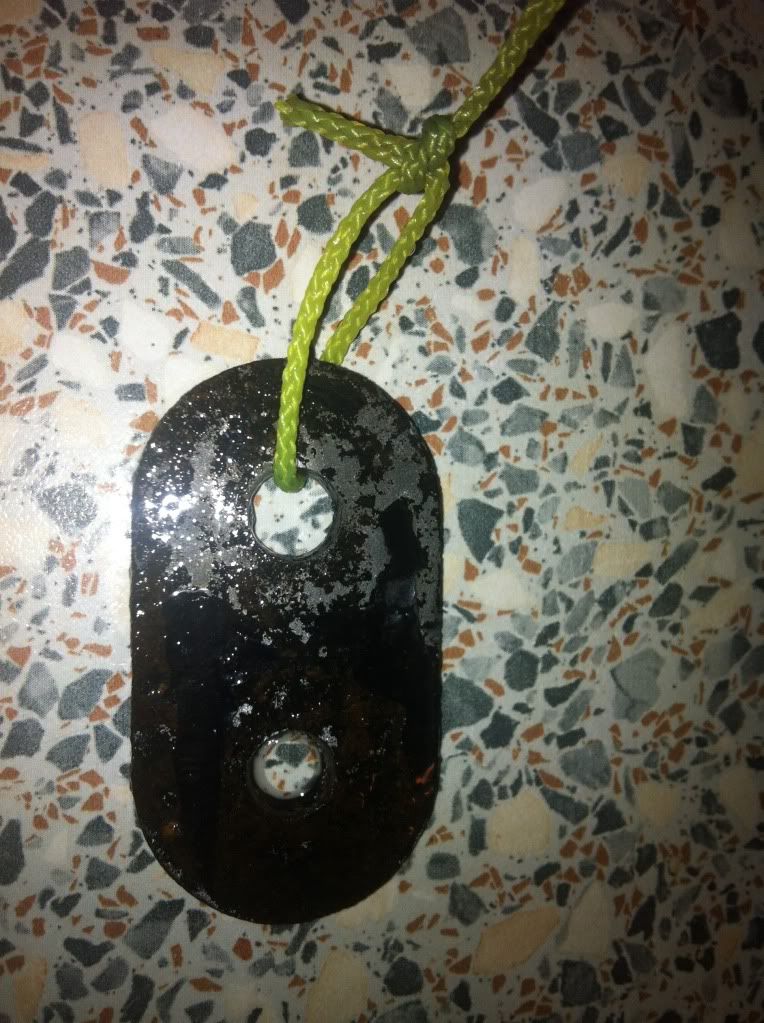
chris-g - 9/1/13 at 10:09 PM
Good work, interested to see how this turns out. Its the sort of thing I expect to see on Myth Busters.
StevieB - 9/1/13 at 10:32 PM
If it works, then the next step is to knock up a big tank with some timber and pond liner and drop in a midget axle ( might need a couple of weeks for
that though).
If it was mythbusters, I'd be removing the rust with some AMFO 
spiderman - 9/1/13 at 10:49 PM
Electrolysis is far quicker and the materials a lot cheaper. There are no hazardous products produced as long as you do not use stainless steel
electrodes.
MakeEverything - 9/1/13 at 11:12 PM
quote:
Originally posted by spiderman
Electrolysis is far quicker and the materials a lot cheaper. There are no hazardous products produced as long as you do not use stainless steel
electrodes.
How so?
Electrolysis;
Battery Charger
Electrodes (sacrificial)
Chemical
Power
Molasses;
Treacle
Water
Both still need a tank, so thats evens.
Am i missing something?
designer - 9/1/13 at 11:20 PM
Molasses works, so does vinegar. BUT, electrolysis is the way to go.
Mr Whippy - 9/1/13 at 11:41 PM
ditto the electrolysis, nothing matches it apart from sandblasting and it's kinder to the metal, seals or good paint than that anyway. Not at all
toxic or remotely difficult to do, just don't stick chrome or stainless in there that's all
Peteff - 10/1/13 at 12:57 PM
What about citric acid ? I've read of people getting good results with it and it's not expensive.
loggyboy - 10/1/13 at 01:08 PM
quote:
Originally posted by MakeEverything
quote:
Originally posted by spiderman
Electrolysis is far quicker and the materials a lot cheaper. There are no hazardous products produced as long as you do not use stainless steel
electrodes.
How so?
Electrolysis;
Battery Charger
Electrodes (sacrificial)
Chemical
Power
Molasses;
Treacle
Water
Both still need a tank, so thats evens.
Am i missing something?
Who doesnt already own (on this forum anyway) a battery charger, some scrap metal, some water and a bucket. You dont need chemicals, just some soda
crystals.
I bet if your doing alot of larger items it would be cheaper to buy all the above (one off costs) over the amount of ingredients/molasses needed to
keep doing it over and over.
Combine with the speed and efficency of electrolosys, It would appear simpler in the long run.
[Edited on 10-1-13 by loggyboy]
coyoteboy - 10/1/13 at 01:11 PM
The quantities of acids/treacles etc needed for large parts seem quite expensive and will degrade with time (and leave a sticky mess). electrolysis
works well at very low concentrations and it doesn't leave behind unpleasantness or poisons. No brainer for me, especially on an axle-sized part,
but if you can get treacle cheaply and don't mind leavign things for ages...
StevieB - 10/1/13 at 03:23 PM
The point of the thread wasn't to state what method is best, but rather to take some time to share the results with those who might be
interested.
Annoyingly it seems to have degraded into a bunch of comments telling me I'm wrong for not using electrolysis.
BenB - 10/1/13 at 04:21 PM
I did a similar experiment way back when.
From
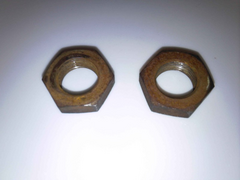

Description
to
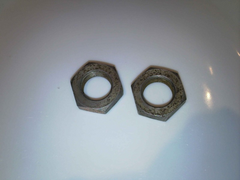

Description
http://www.locostbuilders.co.uk/viewthread.php?tid=97695
the molasses contains a chelating agent apparantly.
MikeRJ - 10/1/13 at 04:31 PM
quote:
Originally posted by MakeEverything
quote:
Originally posted by spiderman
Electrolysis is far quicker and the materials a lot cheaper. There are no hazardous products produced as long as you do not use stainless steel
electrodes.
How so?
Electrolysis;
Battery Charger
Electrodes (sacrificial)
Chemical
Power
The majority of car enthusiast will already have a battery charger.
Electrodes are literally bits of scrap steel, if you've built a Locost you will have plenty of this left over (I use some short lengths of 25mm
RHS)
The chemical is simply washing soda and it is considerably cheaper than Mollasses (90p for a kg of the stuff from Tesco, and that will go a long way
for small parts).
Power use is very small for parts the size of that bracket.
It's a much quicker process than mollases, which may be more convenient.
On the downside you need to provide an electrical connection to the part being de-rusted.
[Edited on 10/1/13 by MikeRJ]
Mr Whippy - 10/1/13 at 04:50 PM
quote:
Originally posted by StevieB
The point of the thread wasn't to state what method is best, but rather to take some time to share the results with those who might be
interested.
Annoyingly it seems to have degraded into a bunch of comments telling me I'm wrong for not using electrolysis.
well you did say you were going to see if it worked quickly and then going to fill a big tank full of Lyle's Black Treacle 
hell go for it I say so long as it does the job, just don't put it in a jar afterwords 
coyoteboy - 10/1/13 at 10:17 PM
quote:
The point of the thread wasn't to state what method is best, but rather to take some time to share the results with those who might be
interested. Annoyingly it seems to have degraded into a bunch of comments telling me I'm wrong for not using electrolysis.
Not at all, you posted on a public discussion forum that you'd tried a method and it worked. Others simply pointed out the other options
that might be cheaper/better and what their preference was. You'll get to learn that this happens pretty regularly. I posted a post pointing out
that it would be possible to use electric brake calipers and devised a way of driving them, thought I'd share it with the world - pretty soon
turned into a 3 page discussion as to why it was wrong to use them. You get used to the fact that you can't just state things and get
congratulated, generally people want to discuss. 

[Edited on 10/1/13 by coyoteboy]
Dangle_kt - 11/1/13 at 12:41 AM
quote:
Originally posted by coyoteboy
quote:
The point of the thread wasn't to state what method is best, but rather to take some time to share the results with those who might be
interested. Annoyingly it seems to have degraded into a bunch of comments telling me I'm wrong for not using electrolysis.
Not at all, you posted on a public discussion forum that you'd tried a method and it worked. Others simply pointed out the other options
that might be cheaper/better and what their preference was. You'll get to learn that this happens pretty regularly. I posted a post pointing out
that it would be possible to use electric brake calipers and devised a way of driving them, thought I'd share it with the world - pretty soon
turned into a 3 page discussion as to why it was wrong to use them. You get used to the fact that you can't just state things and get
congratulated, generally people want to discuss. 

[Edited on 10/1/13 by coyoteboy]
Well done! 
coyoteboy - 11/1/13 at 12:48 PM
Well done though, I'm glad someone proved it - I never believed it would work so it's interesting to see it does. Don't take the
controversy to heart though!
StevieB - 12/1/13 at 09:21 AM
As a comparison though, I have an almost identically corroded part from the other side of the bike that I'll try using electrolysis.
I think the attraction of molasses is that you can leave it and forget about it, where I'd be constantly paranoid about leaving a battery charger
switched on while connected to a bucket of water (plus the gasses and nasties I previously mentioned - I'm just not a fan of electric or
chemicals really).
I didn't get a pic last night of the progress but I did check it and it's not moved on a massive amount - I'll leave it going until it
does have the desired effect.
coyoteboy - 12/1/13 at 01:59 PM
quote:
I think the attraction of molasses is that you can leave it and forget about it, where I'd be constantly paranoid about leaving a battery charger
switched on while connected to a bucket of water (plus the gasses and nasties I previously mentioned - I'm just not a fan of electric or
chemicals really).
Fair enough. As mentioned though, there's no nasties to be had unless you use stainless electrodes, and there's no reason to be paranoid
about connecting 12v charger to water (assuming you take sensible precautions like fused output and input to the charger and don't place the
charger in a place where a child can tip the water over the power source).
You could/can happily stick your bare hands in the water with the electrodes if you wanted to, 12v won't hurt a fly, neither will the bowl of
washing soda.
coozer - 12/1/13 at 02:05 PM
My vote goes to electrolysis, its clean enough, quick enough and better then the other methods. Theres no nastys using it and what your left with can
go down the drain, or like me leave it for the next time even if its months away.
I use an old laptop charger and its way better than a battery charger, chucks out 17v and 5 amps, gets the job done in hours rather than days.
coyoteboy - 12/1/13 at 02:12 PM
Interesting idea, the laptop charger. They're usually switch mode power supplies rather than old-school transformers/rectifiers - I'd be
curious to see how they deal with occasional shorts and continuous use.
FWIW you don't necessarily want higher voltage (it can do damage). It's the current that does the work but unless you're going to load
up your concentration of soda massively you won't make use of the current without the higher voltage, fine balance to be struck. Seen any
etching with the 17v?
StevieB - 13/1/13 at 07:11 PM
Bit of an update.
The molasses experiment didn't really go too far beyond the last pic I posted - it's been a week without much more change. It could be the
I got the mixture a little weak or that it needs a lot longer to sit (the rust was fairly well built up). Also, a lot of the rust was under the
remaining powder coat that wasn't flaking off so easily so this may have affected things.
I had a crack at electrolysis on the other identical part and it worked fairly well after just an hour this afternoon.
To top things off, I've chucked the molasses soaked part into the electrolysis tub and it's really shifting the rust now. I have a little
bicarb in there for now as I didn't have chance to get any soda crystals yet.
Electrolysis is clearly the more effective method, but I believe the molasses route will have it's place too, probably for complicated parts or
maybe as a pre-soak for really rusted bits.
coozer - 13/1/13 at 07:27 PM
quote:
Originally posted by coyoteboy
Interesting idea, the laptop charger. They're usually switch mode power supplies rather than old-school transformers/rectifiers - I'd be
curious to see how they deal with occasional shorts and continuous use.
FWIW you don't necessarily want higher voltage (it can do damage). It's the current that does the work but unless you're going to load
up your concentration of soda massively you won't make use of the current without the higher voltage, fine balance to be struck. Seen any
etching with the 17v?
Nope, all fine, just does it quicker. Been using it for a couple years now no problem. Was going to do a piece for another forum but I've ran out
of things to derust!
StevieB - 13/1/13 at 07:40 PM
quote:
Originally posted by coozer
quote:
Originally posted by coyoteboy
Interesting idea, the laptop charger. They're usually switch mode power supplies rather than old-school transformers/rectifiers - I'd be
curious to see how they deal with occasional shorts and continuous use.
FWIW you don't necessarily want higher voltage (it can do damage). It's the current that does the work but unless you're going to load
up your concentration of soda massively you won't make use of the current without the higher voltage, fine balance to be struck. Seen any
etching with the 17v?
Nope, all fine, just does it quicker. Been using it for a couple years now no problem. Was going to do a piece for another forum but I've ran out
of things to derust!
Do you want some more bits to work on?
[Edited on 13/1/13 by StevieB]










